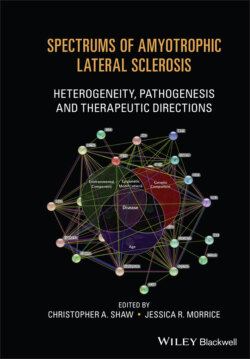Читать книгу Spectrums of Amyotrophic Lateral Sclerosis - Группа авторов - Страница 42
Regulatory and Intronic Variants
ОглавлениеAlthough most variants currently associated with ALS are in coding regions of genes, some discoveries of noncoding regions have been made. Variants in the untranslated regions of transcripts are generally regulatory, affecting the level and localization of transcripts [90], while intronic variants might affect splicing and nuclear export of transcripts [91]. While a rare variant is not causal simply because it is in a known ALS gene, at least some noncoding variants in these genes are likely implicated in disease risk. As the association of noncoding variants with ALS has not often been replicated or expressly studied, these variants may represent a significant proportion of missing heritability, and genetically explained cases could be higher than currently reported. While it is rare that a single variant has a strong effect on ALS risk, ALS cases appear to have a higher burden of rare variants in the 3’UTR region of known ALS genes [86]. For example, variants in the 3’UTR of FUS gave elevated FUS expression and higher risk for ALS [92] and were observed in 1.2% of ALS cases in a study cohort [92]. Several ALS‐associated genes encode for RNA binding proteins [17, 21, 36], which could interact with these untranslated regions of ALS genes. As an example, TDP‐43 binding to intronic and 3’UTR regions of its RNA targets is one of its normal functions, and without proper binding, TDP‐43 has a significantly higher tendency to form cytoplasmic aggregates [31].
